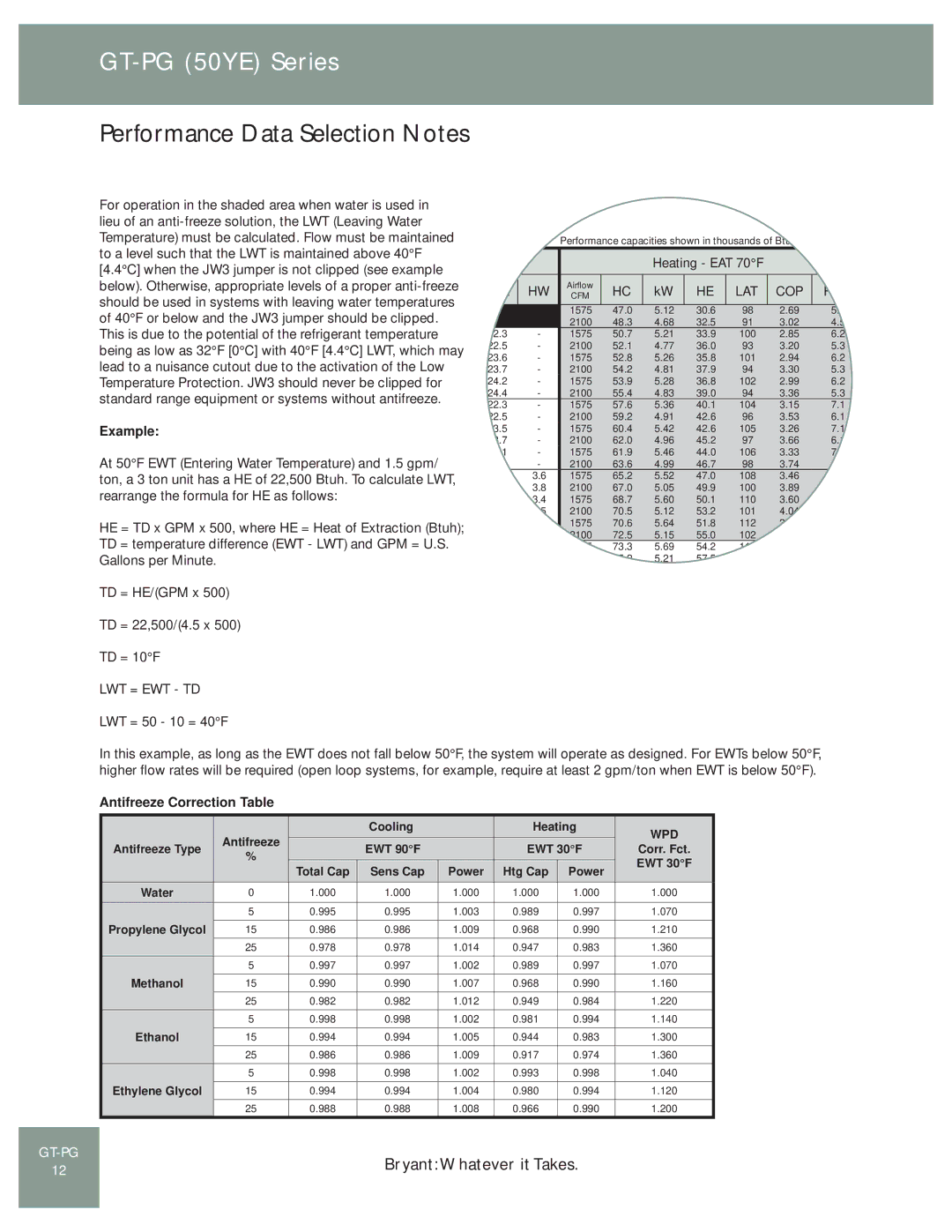GT-PG (50YE) specifications
The Bryant GT-PG (50YE) is a state-of-the-art gas-fired packaged unit ideal for both commercial and residential applications. Renowned for its efficiency and reliability, this model stands out in the competitive HVAC market. With its sleek design and advanced features, it promises optimal performance while maintaining energy efficiency, making it a favorite among building owners and contractors alike.One of the most remarkable features of the Bryant GT-PG (50YE) is its high-efficiency gas heat exchanger. This component enhances energy transfer, ensuring that maximum heat is produced with minimal energy consumption. With an Annual Fuel Utilization Efficiency (AFUE) rating that meets and exceeds industry standards, users can count on significant savings in energy bills over time. Additionally, the unit is equipped with a multi-speed blower that further enhances its efficiency by providing a consistent flow of air while reducing noise levels.
Another significant characteristic of the GT-PG (50YE) is its advanced control system. Featuring a user-friendly interface, this system allows for precise temperature control and integration with smart home technologies. The modulating gas valve optimizes performance based on heating demand, providing customized comfort for any environment.
Reliability is key with the Bryant GT-PG (50YE). It is built with sturdy materials designed to withstand the elements, enhancing its lifespan and reducing maintenance needs. The inclusion of a robust stainless steel heat exchanger aids in preventing corrosion, ensuring durability in various climates.
Moreover, safety features are paramount in the design of the GT-PG (50YE). It includes integrated safety controls, such as a flame rollout switch and limit control, providing peace of mind for users.
Installation and maintenance are made easy with this model, which includes a compact design allowing for versatile placement options. Service access has been thoughtfully designed, ensuring technicians can perform routine maintenance without hassle.
In conclusion, the Bryant GT-PG (50YE) is a powerhouse of an HVAC solution, blending efficiency, reliability, and advanced technology. With its exceptional heating capabilities, user-friendly controls, and durable construction, this model is perfect for anyone looking to invest in long-term comfort and performance. Whether for residential or commercial use, the GT-PG reflects Bryant's commitment to quality and customer satisfaction.

